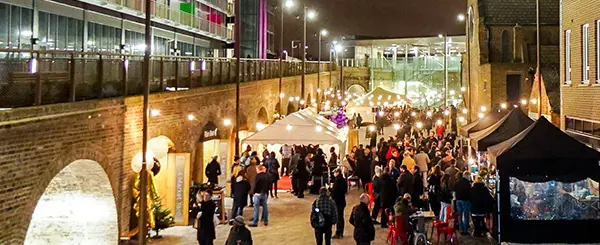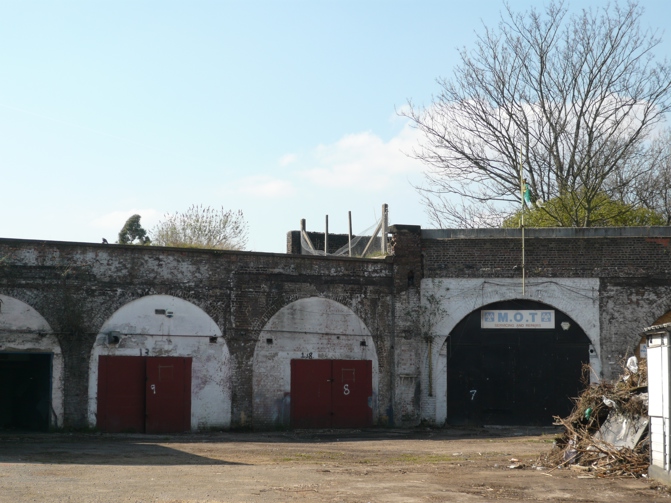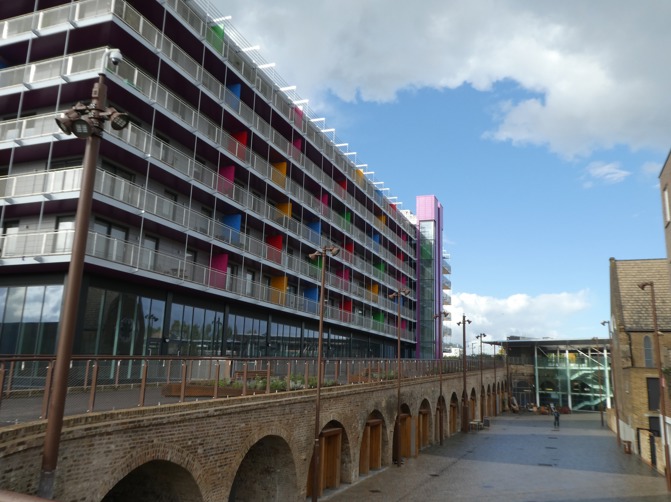The Deptford Project has been announced as winner of the ‘Best Heritage Project’ in London at the London Planning Awards!
What a fabulous finale for Lichfields, for a project that has transformed a run-down part of Deptford, providing housing, commercial units and a new market, and bringing life back to a listed railway structure that was on Historic England’s buildings at risk register.
Working on behalf of U+I Group plc (formerly Cathedral Group), Lichfields has provided planning inputs into the Deptford Project from the start, securing the original planning permission, and conservation area and listed building consents, discharging conditions and then obtaining permissions and consents for the numerous subsequent details and changes needed to meet the evolving requirements of the development.
The Deptford Project comprises a number of very different elements of development that work together to create a successful regeneration area in the heart of Deptford.
Whilst the Rogers Stirk Harbour + Partners-designed 121-unit apartment building (now known as Tinderbox House) is an obvious key feature of the project, providing a modern and vibrant residential development with a roof-top garden, it is the Grade II Listed Carriage Ramp running proudly alongside the apartment building that makes this development unique.
The Carriage Ramp was built in 1832 for providing rolling stock and private carriage access to the Deptford Station and Railway Viaduct, which is itself the longest listed structure in the UK. It is hard to imagine that the Ramp was constructed in an open field, although in the subsequent 20-25 years it was enveloped by the expansion of London, with new terraced housing backing directly onto it.
The open arches, which reduce in height beneath and along the length of the Ramp, were originally used for storage in association with railway works, although they were later used by private companies for heavy goods storage. Over the years, a lack of investment in the up-keep of the Ramp and the removal of most of its east-west section saw it fall into disrepair. The Carriage Ramp was always important though, as the last remaining of three such ramps in London.
It was The Deptford Project that saved the structure, providing the investment and careful renovation needed to bring the Ramp back to life. This was not without its challenges but the end product, resulting in this award, speaks for itself. The Ramp and its new east-west section provide access to Deptford Rail Station whilst businesses occupy the arches once again.
In front of the Carriage Ramp is the new Deptford Market Yard, providing public realm and a new market area with new connectivity through the site and beneath the Carriage Ramp, and with improved legibility provided by the implementation of a comprehensive wayfinding strategy.
The development also includes St Paul’s House, which fronts Deptford High Street and provides 8 apartments, 3 town houses and 2 restaurants.
I may be biased but I do think that the Deptford Project is very deserving of its title of ‘Best Heritage Project in London’, given at the London Planning Awards. I will miss working on such an exciting development; however it is now time to let the development do the talking as it becomes a fully integrated part of Deptford.
Indeed it is already bringing benefits to the area by acting as a catalyst for further regeneration and investment. Whatever happens, the Grade II Listed Carriage Ramp will be around to see it.
Image credit: Deptford Market Yard



